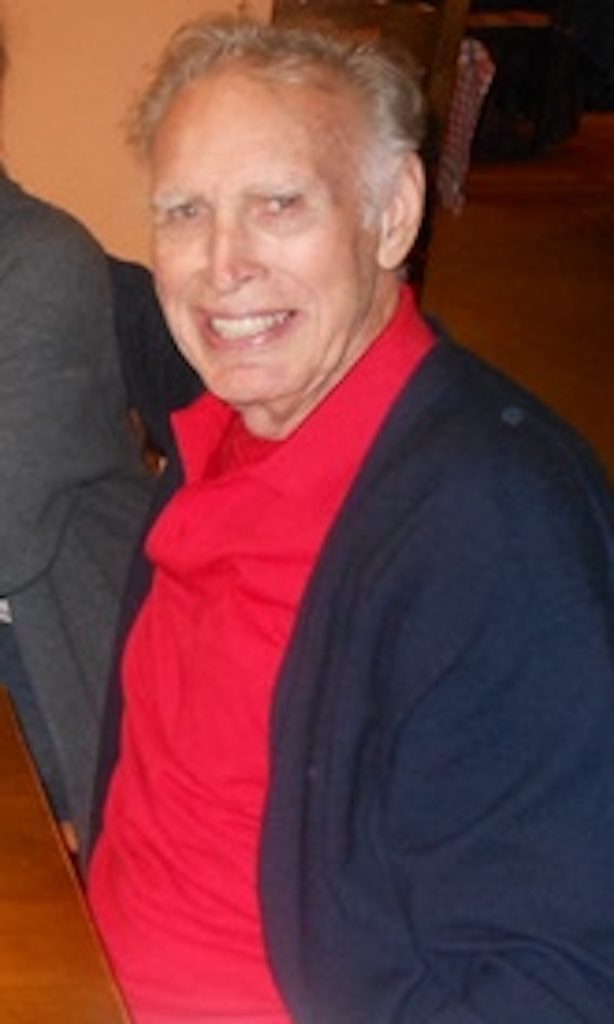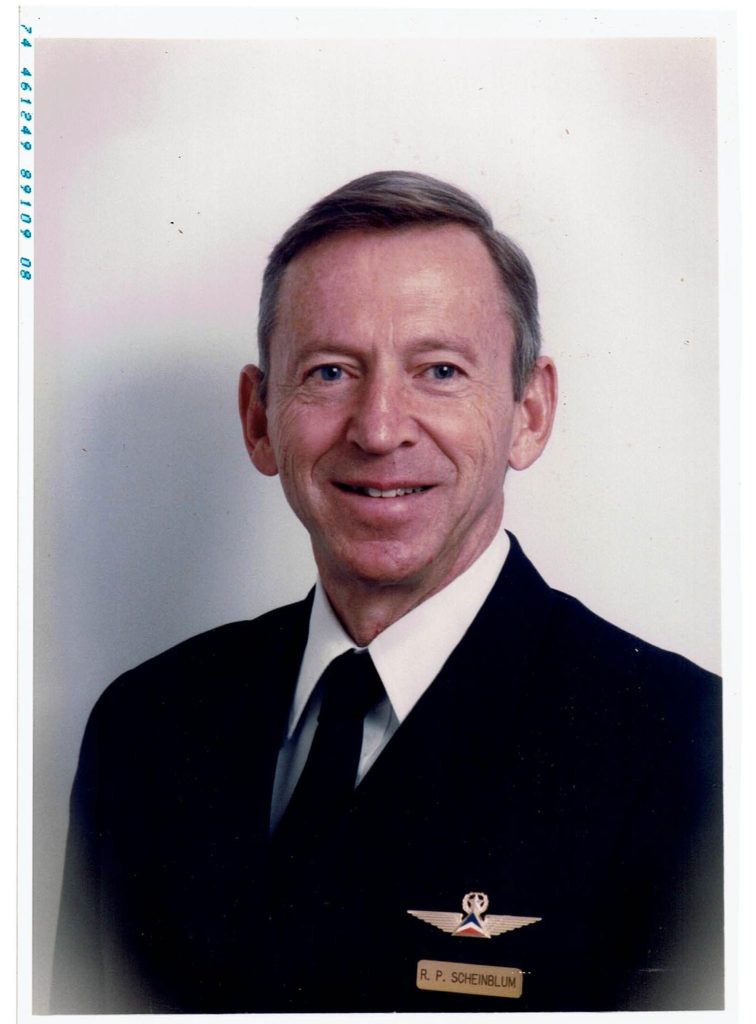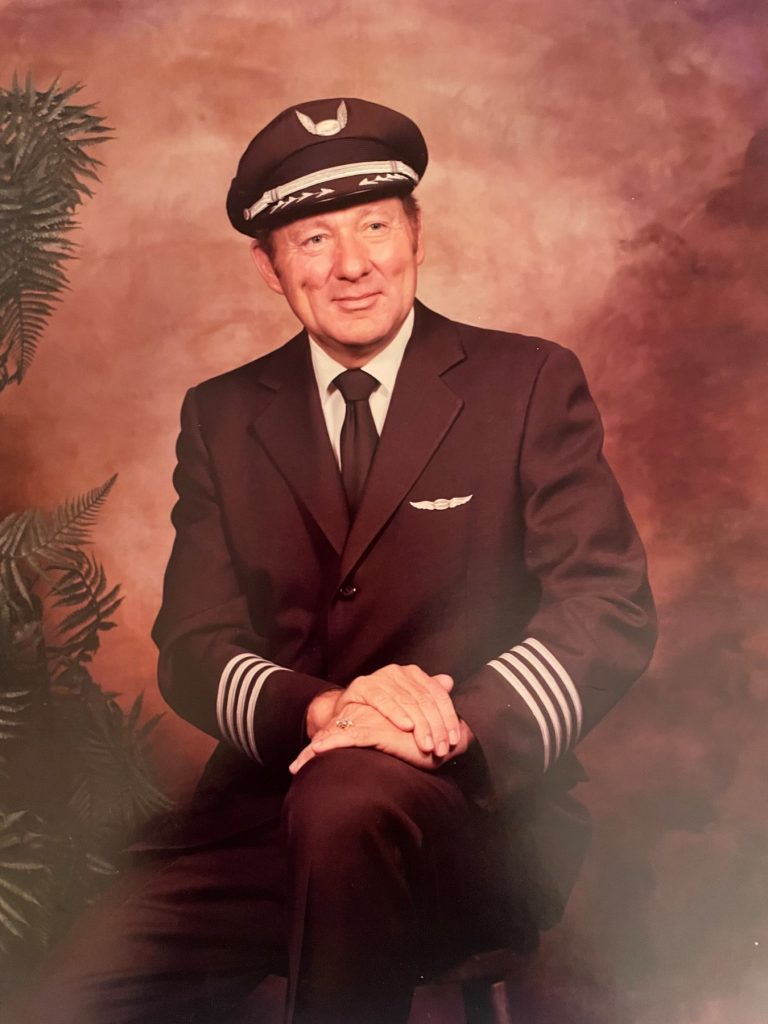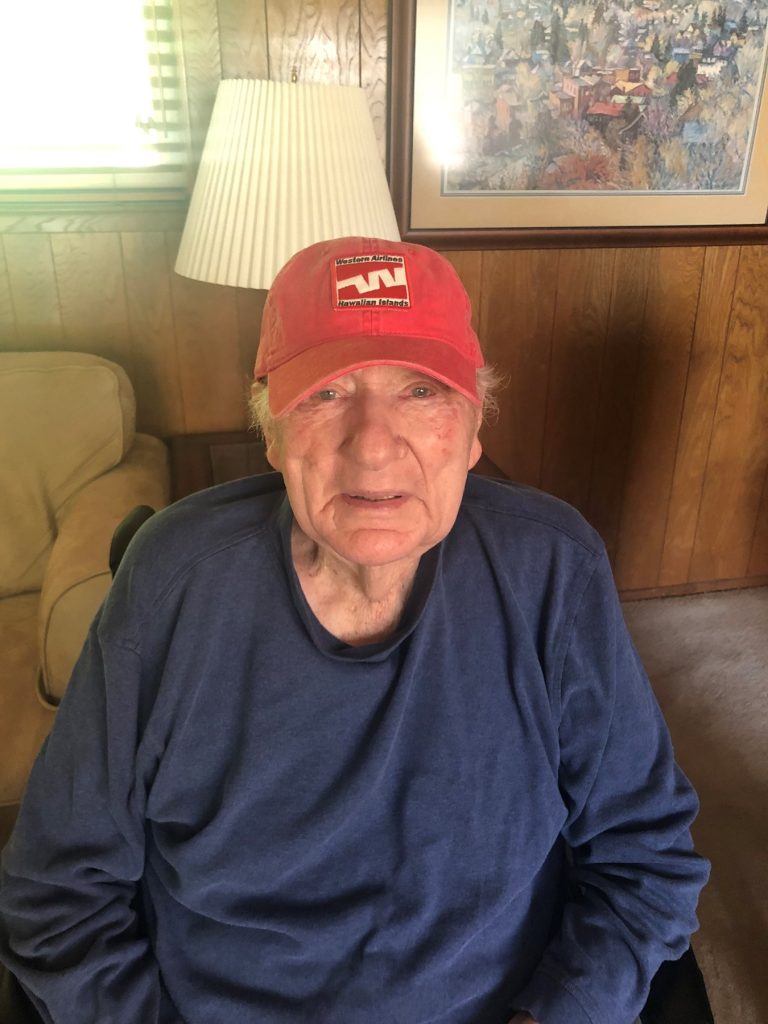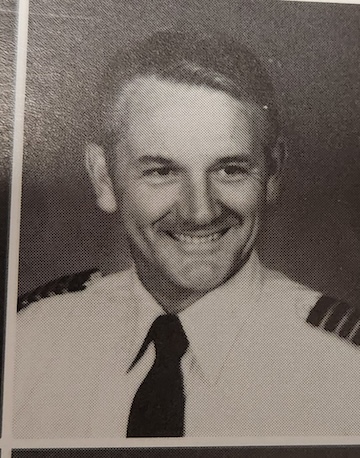~ IN MEMORY ~
Jane Morris Wood, wife of WA/DL Capt. Vern Wood
August 19, 1937 — December 2, 2024
Jane Frances was born in the city by the bay, San Francisco, California, in 1937. Her birth came just a few months after another extraordinary event, the opening of the Golden Gate Bridge. Thus, Jane’s life was destined to be golden, filled with great moments of courage, heart, and inspiration.
In her early years, Jane’s family, along with sisters Mary, Nadine, and brother Michael, relocated back to Kansas where she spent most of her childhood at a small town outside of Wichita called Kingman. Their lives revolved around family, farm life, and St. Patrick’s Catholic Church. Jane was greatly influenced by her Aunt Catherine who had a taste for the finer things in life, inspiring her passion for cooking and interior design. For Jane’s senior year of high school, she was sent to St. Mary of the Plains boarding school in Kansas City, where she got her first taste of freedom, a room of her own, and the nomination of homecoming queen.
After graduating high school, Jane became an X-ray technician, which funded her travels and adventures as a young woman. She moved out to Dover, Delaware, to be near her sister Nadine. Here, she shared a house with friends, hanging out on Rehoboth Beach, dancing at the Bottle & Cork, having parties with Air Force guys. Thus, it was this fateful time that she would come into acquaintance with a young pilot and Air Force Academy graduate, Vern Wood. On a ski trip to the Poconos, Jane’s fate was sealed when she locked eyes with Vern who drove up in his Jaguar Roadster with another lady. It was love at first sight.
Jane and Vern dated frequently after that, and rumor has it, Jane pushed his girlfriend off the X-ray table when she came in for an exam. No really, it was an accident. After several months of courtship and parties at the Bottle & Cork, Jane and Vern got married at the Air Force Base among friends and family in their finest military apparel. Jane’s sisters, Nadine and Mary, who were very dear to her, were there for the event. Later their first-born son and child prodigy Patrick Wood was born, and they started the adventure of family life.
Vern got a job with Trans World Airlines (TWA) based out of San Francisco, so they hitched the sailboat to the car, threw their belongings in the boat, and drove out to California to begin their new life in the wild, wild west. They dodged a snowstorm at Donner Pass, as they drove over the Sierra Nevadas and rented a house in the East Bay Area town of Pleasanton. Shortly thereafter, Vern was furloughed from TWA, so he signed back up with the Air Force to fly on reserve from Travis Air Force Base. It wasn’t soon after that their daughter Heather was born.
In the early 70s, Vern and Jane moved to Vacaville, where they hung out with their pilot friends and wives, creating a small community there. Jane’s entrepreneurial spirit was sparked at that time, and she decided to open a store in town. A precursor to the Williams Sonoma concept, JJ Gourmet was part interior design showroom/part culinary nexus. Here, Jane channeled her passion for cooking, selling Cuisinarts, Kitchen Aid mixers, and Calphalon pans. She loved going to San Francisco to the Merchandise Mart to buy products for the store. She sold Krups coffee makers, kitchen gadgets, and knives by Chicago cutlery. She held cooking classes with early culinary giants like Biba Caggiano and David Berkeley. Italian cooking, Cooking for Kids, and Asian Cooking were some of the classes offered.
Jane’s heroes were Katherine Hepburn and Julia Child. In 1978, she met Julia Child at a weekend cooking seminar on the coast of Northern California called “Cookery at the Cove.” She spent the weekend making Coq Au Vin and Beef Bourguignon with Paul and Julia, drinking wine and sharing stories. Jane had all of Julia’s cookbooks and her library of cookbooks is something to behold. The Joy of Cooking, The Better Homes & Gardens Cookbook, and San Francisco A la Carte (by the Junior League of San Francisco) were a few of her favorites. To prepare a meal, she would look up a recipe in one book, then find it in two others, ultimately combining the best of all three. Throughout her life, Jane brought this meticulousness to the home, infusing it with love and a passion for detail.
Meanwhile, Vern was hired by Western Airlines and was flying the friendly skis all over the place. He had a mustache, a Pontiac Grand Prix, and sold turquoise jewelry from a portable jewelry box at random on layovers. Eventually, Jane and Vern decided to move up to Sacramento, where they found a family of friends in the Sierra Oaks neighborhood, forging lifelong friendships centered around schools, sports, and sunshine. Vern started buying distressed properties and flipping rentals in his spare time. Everything could be improved with a fresh coat of paint and some caulking in the bathroom. It was during this time that Pat and Heather cleaned a million paintbrushes.
Jane sold JJ Gourmet a few years after arriving in Sacramento and managed all the paperwork of the rental houses, as well as kept everyone fed, clothed, and educated while Vern was away. This was no small feat as it was before the digital era. Jane made sure everyone was outfitted in the latest fashions, took the kids to sporting events, held birthday parties. She cooked and cleaned and did it all with strength and detail.
Jane made every holiday special, setting the dining room table with fine linens and china that Vern brought back from Japan. Her Thanksgiving dinners were amazing, even if they were served on the late side. No one could make gravy quite like Jane. Her fresh cranberry relish was a hit with chopped apples, orange zest, and fresh blended cranberries. There would be no clumping cranberry from a can for this lady. Jane’s signature appetizer was a sherry baked brie that made friends out of enemies. Her molded guacamole and pistachio cheese wafers were also a hit. One Christmas she made Cioppino, out of every fish in the sea. On St. Patrick’s Day, corned beef and cabbage were an annual tradition. On these holidays, Vern would wear his “kiss me, I’m Irish” shirt, even though he only married into the clan.
During the 1980s, when she wasn’t cooking great dishes for the family, Jane tolerated teenage angst, smoked Marlboro Lights, and drove the family up to Tahoe in a Datsun B210 hatchback. She participated in the Lycra revolution by joining a Jazzercise class on J Street in downtown Sacramento. She took the kids to the Newman Center at Sac State where they sang Kumbaya with the college congregation. She took Pat and Heather to international food festivals and rented a VCR player, so they could watch Jaws and ET. She signed Pat up for the Jesuit Fashion Show, which was a high point in his fashion history. She drove the kids to soccer, baseball, and swim team meets. She drove the kids to Tahoe Donner on the weekends, so they could compete on the ski team.
Jane had a passion for bridge, which she played frequently with friends in the area. She also loved musicals and Broadway shows. She took her sister, Mary, and Pat’s wife, Danielle, to see the Radio City Rockettes, as well as bought season tickets to the Music Circus when the kids were young. She loved to travel, taking frequent visits to Ohio, New York, and Georgia to visit her sisters. In 2009, she took Heather to see 9 to 5 on Broadway, starring Allison Janney. During that trip, Jane insisted on dining at Bobby Flay’s Bar Americain. Jane left no stone unturned in seeking out the finer aspects of life.
When the kids went away to college, Jane joined the Assistance League and participated in charity events in Sacramento. In the mid 1990s, Jane and Vern moved to the DFW area, where Vern took over the helm of Captain on the Delta 767s flying to South America. During this time, Jane joined Mid-Cities Supporters of the Shelter in the Colleyville/Grapevine Area, where she became heavily involved in fundraising for The Women’s Shelter, providing support for victims of domestic violence. When Jane joined the organization in 1995, Mid-Cities SOS was struggling with membership. She started some new fundraisers and breathed new life into old ones, re-energizing SOS, forging new friendships around giving, service, and concern for women’s rights.
Jane served SOS in many capacities. Her service was recognized in 1999 when she was presented with the Shining Star Award by then Senator Jane Nelson (now serving as Texas Secretary of State). She was also SOS President from 2000-2001, dedicating herself to sponsorship for a host of large events including the Annual Tennis Benefit at Southlake Tennis Center, the Poinsettia Sale, Art of the Table, and Celebrity Chefs. Jane worked tirelessly behind the scenes on many committees and was continually fundraising, hosting a martini party at her home, which was the talk of the town, getting press in the local newspaper for its wide variety of ‘tinis, including the Apple Tini, The Cosmopolitan, the Chocolate Espresso Martini, and the Lemon Drop Martini. When shopping with Jane around town, she would ask every business owner whether they would like to sponsor an event for SOS. She was never afraid to ask for a sponsorship or donation. She solicited sponsorships from Central Market, American Airlines, the Bank of Texas, and numerous small businesses in the area.
Jane’s extensive charity work underscores the endless generosity, heart, and service that so many of us knew firsthand. Throughout the years, she raised hundreds of thousands of dollars to support women and children needing shelter from violent relationships. Through her outreach, she met several high-profile individuals including Tamryn Hall, Erin Brockovich, and Kristen Chenowith. She actively recruited members throughout the community, inspired them and mentored them to take leading roles in SOS. In essence, she was and is the heart and soul of Mid-Cities SOS. For those reasons, we ask for you to make a small donation in Jane’s honor to the organization at Mid-Cities Supporters of the Shelter.
Jane was predeceased by her parents Margaret Heatherman Morris and Dean Morris; her brother Michael; her sister Nadine, brother-in-law Lt. Col. Bill Thornton, and nephew Michael Thornton. She is survived by her husband, Vern Wood, of 55 years, her son Patrick Wood, her daughter-in-law Danielle Gonzales-Wood, her daughter Heather Wood, and their families, including Genesis and Andrea Gonzales of Redding and Santa Rosa, California, respectively, and Hannah, Piper, and Stella Wood of North Richland Hills, Texas.
She is also survived by her sister Mary Paramoure, brother-in-law Rod Paramoure of Marietta, Georgia, and her cousins Peg and Jim Frieden of Hurst, Texas. She is survived by her nieces and nephews Bill, Tracy, Veronica, and Gabrielle Thornton of Springfield, Ohio; Christine Thornton, and Peyton and Jacob Mance of Red Hook, New York; Guin Paramoure Patrick and Olivia Patrick of Atlanta, Georgia; and Dwight, Noelle, Julia, and Haley Paramoure of Marietta, Georgia.
Jane was an active member of Mid-Cities Supporters of the Shelter, The Jesuit Fund, and the Kimball Museum, Fort Worth. In lieu of flowers, please consider donating to Mid-Cities Supporters of the Shelter.
Jane’s Funeral Mass will be held
January 18, 2025, at 11:30 AM. St. Michael Catholic Church, 3713 E. Harwood Road, Bedford, TX, 76021.
“A cook is only as good as their ingredients.” —Jane Wood
